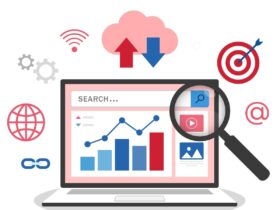In the world of finance, not all solutions need to be large to make a significant impact. Microloans, also known as microcredit or 소액대출, have emerged as a small yet powerful solution for addressing the financial needs of individuals and small businesses, particularly in developing economies. These small-scale loans provide access to modest amounts of capital that can help lift individuals out of poverty, support entrepreneurial ventures, and foster economic growth. In this article, we will explore the concept of microloans, their benefits, how they work, and their impact on individuals and communities. Read more about small business loan on www.outlookindia.com
Understanding Microloans
Microloans are small loans extended to low-income individuals, often without traditional collateral requirements. They are typically offered by microfinance institutions (MFIs) or nonprofit organizations that aim to provide financial services to the underserved and financially excluded populations. Microloans are designed to help individuals start or expand small businesses, cover emergency expenses, invest in education, or improve their living conditions.
Benefits of Microloans
Microloans offer numerous benefits, making them a compelling solution for addressing various financial needs:
Financial Inclusion: Microloans bridge the gap between the financially excluded and the formal banking system. They provide access to credit for individuals who may not qualify for traditional bank loans due to lack of collateral or formal credit history.
Poverty Alleviation: By providing small amounts of capital to entrepreneurs and individuals in impoverished communities, microloans empower them to start or grow businesses, leading to increased income and improved living standards.
Entrepreneurship Support: Microloans foster entrepreneurship by allowing aspiring entrepreneurs to access capital and start small businesses, contributing to economic growth and job creation.
Women Empowerment: Microloans often target women entrepreneurs, empowering them to become financially independent and play a more active role in their communities.
Quick Access to Funds: Microloans are typically processed more quickly than traditional bank loans, allowing borrowers to access funds promptly in times of need.
How Microloans Work
Microloans function differently from conventional bank loans in several ways:
Loan Amounts: Microloans are generally small, ranging from as little as a few dollars to a few thousand dollars. The loan amounts are tailored to the specific needs of the borrower.
Repayment Terms: Microloans usually have short repayment terms, often ranging from a few months to a couple of years. The shorter terms help borrowers repay the loans quickly and avoid long-term debt.
Interest Rates: Microloans may have higher interest rates compared to traditional bank loans. This is because the administrative costs of processing and managing small loans are relatively higher, and MFIs may need to charge slightly higher interest to cover their operational expenses.
Group Lending: Some microfinance institutions practice group lending, where borrowers are organized into small groups. Each member of the group is jointly responsible for ensuring the timely repayment of the loans. This peer pressure model encourages a high repayment rate and fosters a sense of community support.












